I am trying to estimate the following model
where I provide uniform priors  and I code the likelihood
and I code the likelihood  . The latter comes from this paper and goes as follows:
. The latter comes from this paper and goes as follows:
In the theano/pymc3 implementation I am computing the first and second term on the rhs in first_term and second_term. Finally logp sum over the entire sample.
Theano, on his own is producing some output yet when I integrate it in a pymc3 model the following error appears:
TypeError: ('Bad input argument to theano function with name "<ipython-input-90-a5304bf41c50>:27" at index 0(0-based)', 'Expected an array-like object, but found a Variable: maybe you are trying to call a function on a (possibly shared) variable instead of a numeric array?')
I think the problem is how to supply pymc3 variables to theano.
from pymc3 import Model, Uniform, DensityDist
import theano.tensor as T
import theano
import numpy as np
p_test, theta_test = .1, .1
X = np.asarray([[1,2,3],[1,2,3]])
### theano test
theano.config.compute_test_value = 'off'
obss = T.matrix('obss')
p, theta = T.scalar('p'), T.scalar('theta')
def first_term(obs, p, theta):
x, tx, n = obs[0], obs[1], obs[2]
first_comp = p ** x * (1 - p) ** (n - x) * (1 - theta) ** n
return(first_comp)
def second_term(obs, p, theta):
x, tx, n = obs[0], obs[1], obs[2]
components, updates = theano.scan(
lambda t, p, theta, x, tx: p ** x * (1 - theta) ** (tx-x+t) * theta * (1 - theta) ** (tx + t),
sequences=theano.tensor.arange(n), non_sequences = [p, theta, x, tx]
)
return(components)
def logp(X, p_hat, theta_hat):
contributions, updates = theano.scan(lambda obs, p, theta: first_term(obs, p, theta) + T.sum( second_term(obs, p, theta) ) ,
sequences = obss, non_sequences = [p, theta]
)
ll = contributions.sum()
get_ll = theano.function(inputs = [obss, p, theta], outputs = ll)
return(get_ll(X, p_hat , theta_hat))
print( logp( X, p_test, theta_test ) ) # It works!
### pymc3 implementation
with Model() as bg_model:
p = Uniform('p', lower = 0, upper = 1)
theta = Uniform('theta', lower = 0, upper = .2)
def first_term(obs, p, theta):
x, tx, n = obs[0], obs[1], obs[2]
first_comp = p ** x * (1 - p) ** (n - x) * (1 - theta) ** n
return(first_comp)
def second_term(obs, p, theta):
x, tx, n = obs[0], obs[1], obs[2]
components, updates = theano.scan(
lambda t, p, theta, x, tx: p ** x * (1 - theta) ** (tx-x+t) * theta * (1 - theta) ** (tx + t),
sequences=theano.tensor.arange(n), non_sequences = [p, theta, x, tx]
)
return(components)
def logp(X):
contributions, updates = theano.scan(lambda obs, p, theta: first_term(obs, p, theta) + T.sum( second_term(obs, p, theta) ) ,
sequences = obss, non_sequences = [p, theta]
)
ll = contributions.sum()
get_ll = theano.function(inputs = [obss, p, theta], outputs = ll)
return(get_ll(X, p, theta))
y = pymc3.DensityDist('y', logp, observed = X) # Nx4 y = f(f,x,tx,n | p, theta)
My first guess was modifying logp with return(get_ll(X, p.eval(), theta.eval())) but then theano complains about some mysterious p_interval missing from the graph. Any clue?

